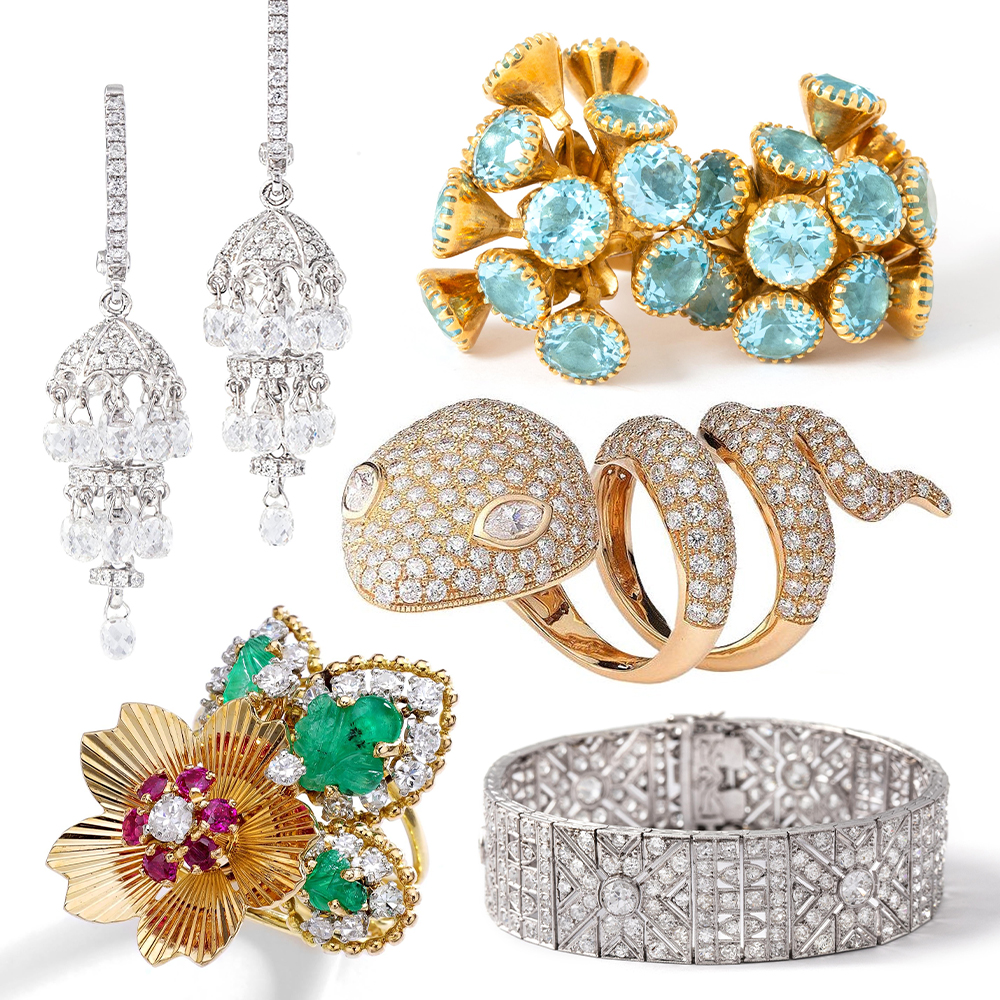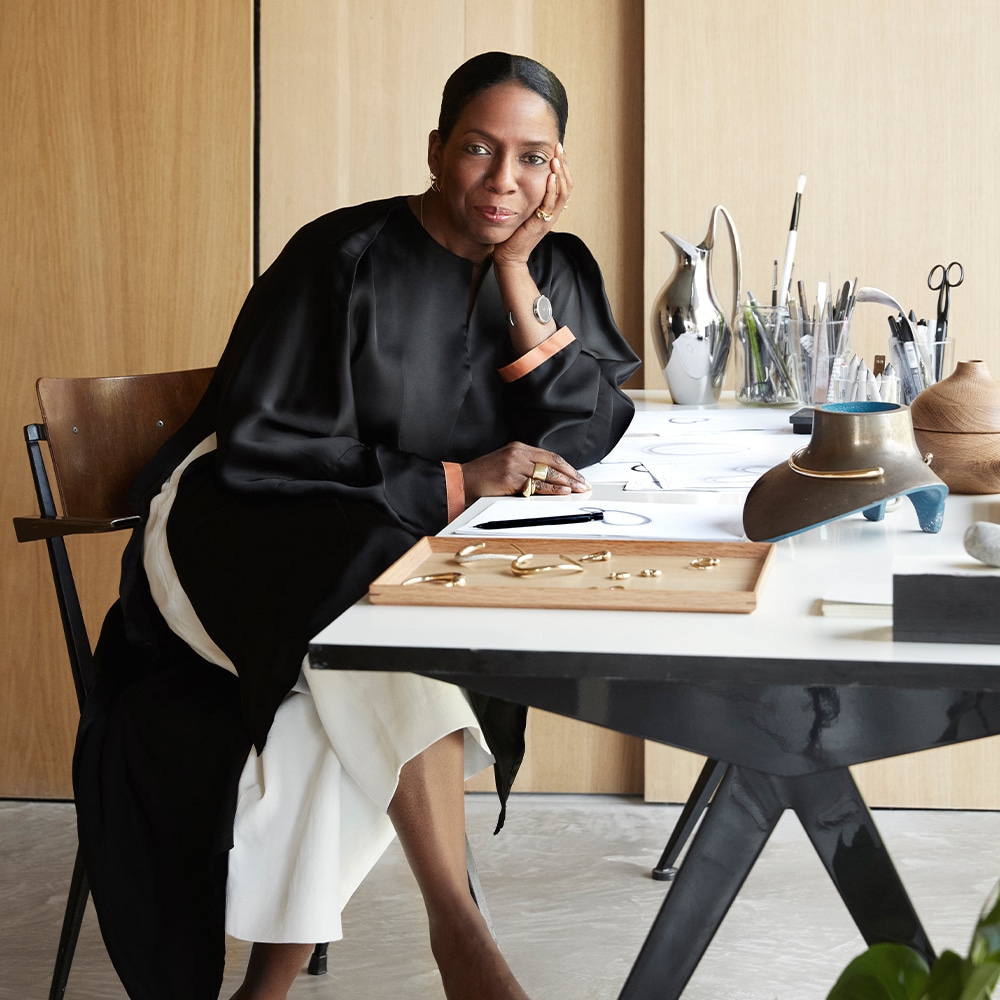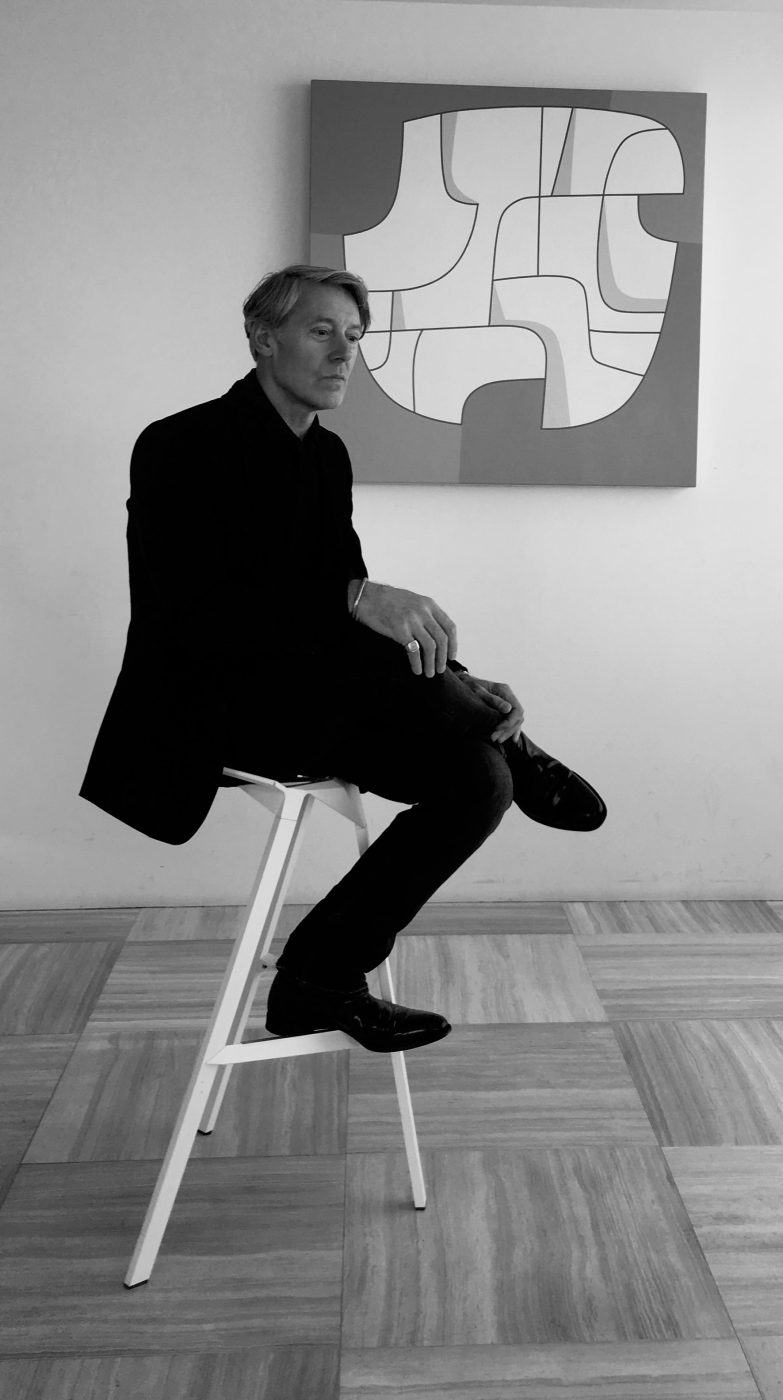
June 2, 2024“Mine’s the messiest today,” says the British jeweler Malcolm Betts, smiling and pointing to one of three workbenches in a space he shares with two longtime master jewelers, where they shape noble materials into set pieces designed to command attention. His table is indeed covered in a shimmering layer of gray dust and strewn with blackened files, punchers, pliers and hammers.
Here and there, scraps of gold catch the light like tiny sequins, and to one side is a soy-sauce bottle filled with water. “The water is especially important because when you mix it with borax it creates a fine flux paste that stops the metal from oxidizing when it is heated,” Betts explains. “It’s wonderful, really — like liquid glass helping the solder flow into the joint.”
You can tell that Betts is in his element walking around his compact (and otherwise very tidy) London atelier. It occupies the basement of his eponymous boutique, which is located on a quiet residential road off Kensington Church Street, one of the oldest in the borough of Chelsea, known for its specialty antiques shops and colorful Victorian and Georgian properties. It’s early May, and gardens have burst into bloom, signaling the time for fresh starts. Betts, like the rest of us, is contemplating the annual task of decluttering and spring cleaning to usher in the new season.
“I should really go through everything. I’ve been here over twenty-three years, so it’s a bit of a time capsule, with all manner of bits and bobs hidden around the place,” he says, looking toward a trio of Japanese red, white and gold daruma dolls positioned against a back wall. Each little figurine has its right eye painted on, marking the start of a journey, since traditionally, you fill in the left eye once you’ve achieved a special goal. Judging by their slightly grayish patina, though, it’s safe to say they haven’t been moved in a while.
Malcolm clearly isn’t too concerned about completing the pair, which stands to reason in a place that champions artistic nuance and freehanded creative expression. In fact, the very notion of a defined start and finish, thus pertaining to a preprogrammed strategy of design, couldn’t be more alien here, since every jewel that leaves the workshop is individually shaped and finessed by hand so that no two are completely alike.
The room contains a laser machine for precision welding in one corner, but otherwise it is dedicated to a time-honored craft focused on manual dexterity. Betts has made this focus on the human touch, evidenced in hand-beaten and organic textures, as well as perfectly imperfect shapes, settings and surfaces, his signature, as he combines traditional techniques with high levels of innovation, ensuring that his luxury pieces remain relevant in a contemporary context.
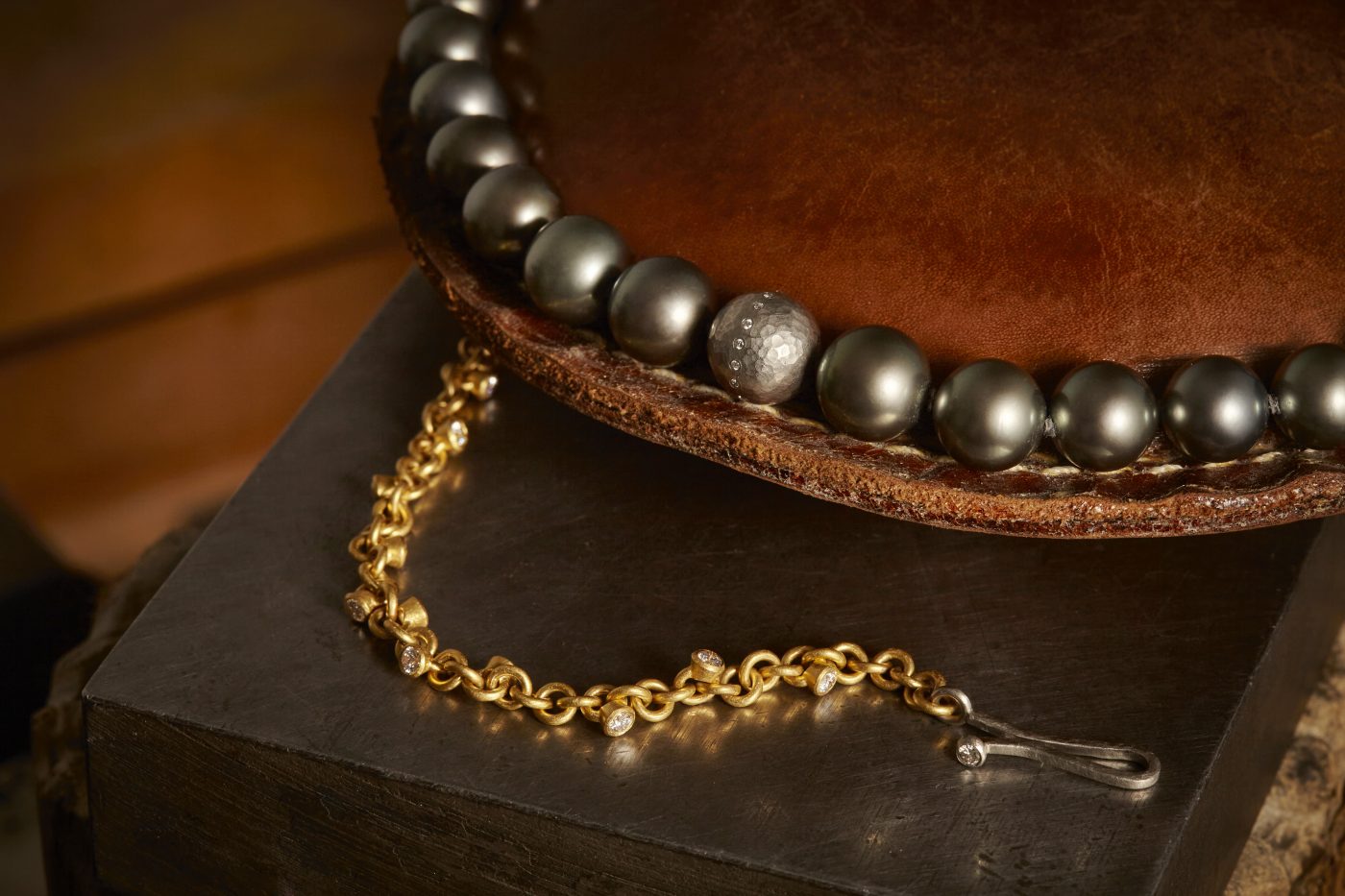
Betts doesn’t deal in dainty or overtly romantic silhouettes. Instead, his collections and custom-made pieces convey a sense of power, strength and permanence. They’re tactile, visually arresting and volumetrically robust, designed for those who like the feel of precious metal — its weight, its warmth — against their skin.
Betts’s hammering marks and dense surfaces on thick link chains, wide band rings, bezel settings and oversize hook clasps play on our instinctive desire to touch and wear his jewelry, while megawatt gemstones, such as rare vintage-cut diamonds, cabochon rubies and vivid square-cut sapphires, add baroque glamour and a touch of rock ‘n’ roll decadence to his designs. “I don’t like things to break or wear out, so shapes are chunky and heavy, using platinum and high-karat gold,” he says. “I particularly like working with twenty-two-karat gold because of its beautifully bright color, which is owed to the fact that it’s ninety-one percent pure. Plus, it’s very soft when annealed [heated and then cooled], so you can easily bend it with your fingers. By hammering and working the texture, you are strengthening the metal, ensuring durability and longevity.” Betts rarely casts anything with molds, preferring instead to manipulate the molten metal to form silhouettes that he describes as more “honest” and “organic.”
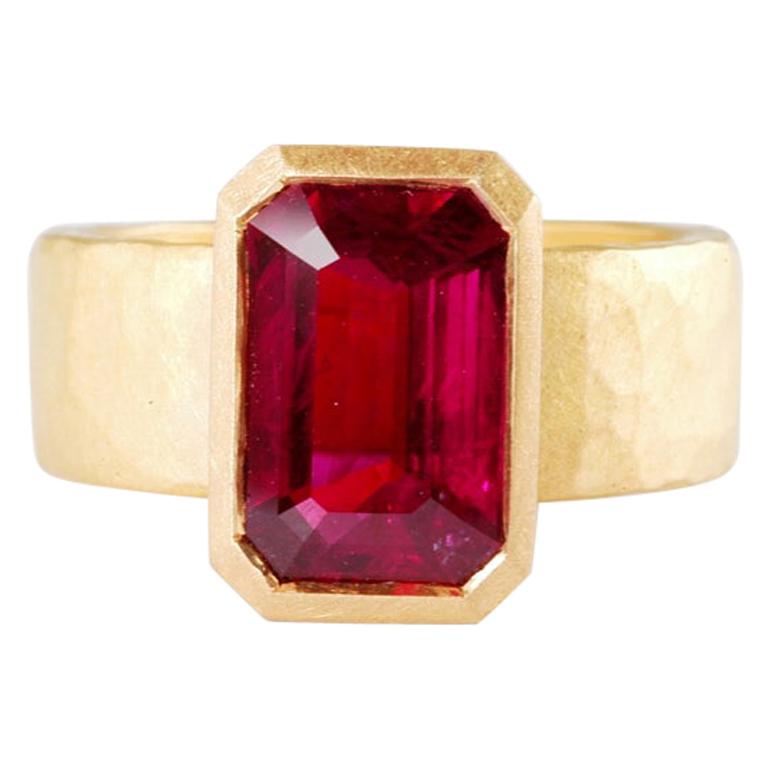

From a young age, Betts challenged and subverted jewelry’s established norms. An alumnus of London’s Royal College of Art, he began handmaking sculptural pieces from affordable materials like silver, aluminum and titanium in his late teens. “This was the mid-nineteen eighties, and at that time, shop-bought jewelry was machined, cast or mass-produced,” he recalls. “Handmade jewelry was usually unwearable, often exhibited in contemporary-art galleries. I was bridging the gap between these two worlds.”
He worked from a warehouse in North London, which he rented with five college friends, and split his time between the jewelry bench and teaching jobs at various schools and universities to make ends meet. His big break came when he showed a series of carved-wood pieces flecked with gold and silver to the London-based fashion designer Joseph Ettedgui, who snapped up the entire collection to sell at his eponymous stores. This led to another fortuitous career boost when a buyer from Barneys New York stumbled upon Betts’s unusual jewels and did the same, setting his overseas career in motion by placing a large order for the iconic store. He went on to make a capsule collection for the Guggenheim Museum Store while continuing to supply Barneys with bigger collections as the Manhattan retailer expanded to other cities across the U.S. and in Japan. Despite the closure of the chain’s U.S. branches, Betts has retained a strong customer base in both countries and beyond. This includes a celebrity following: Tom Cruise, Dustin Hoffman and Jon Bon Jovi are just a few famous names who have signed sales slips for custom-made treasures.

“We’ve seen our fair share of global stars, including popular Japanese celebrities who are still relatively unknown outside of Asia. Currently, we may be making something for Paul Simon,” says Betts. “He’s purchased quite a few pieces from us in the past: bracelets for his wife and items for his band members. He’s a lovely guy.”
It’s easy to see why celebrities, and, in particular, musicians and actors, gravitate to Betts’s jewelry and bespoke service. Free of formality, with a daring, moody edge, his pieces are personal, couture-like in their execution and deeply rooted in the artisanal. They convey that all-important sense of drama and wonder — wrapped in discreet branding and exclusivity — attributable to Malcolm’s low-key approach and longstanding emphasis on excellence.
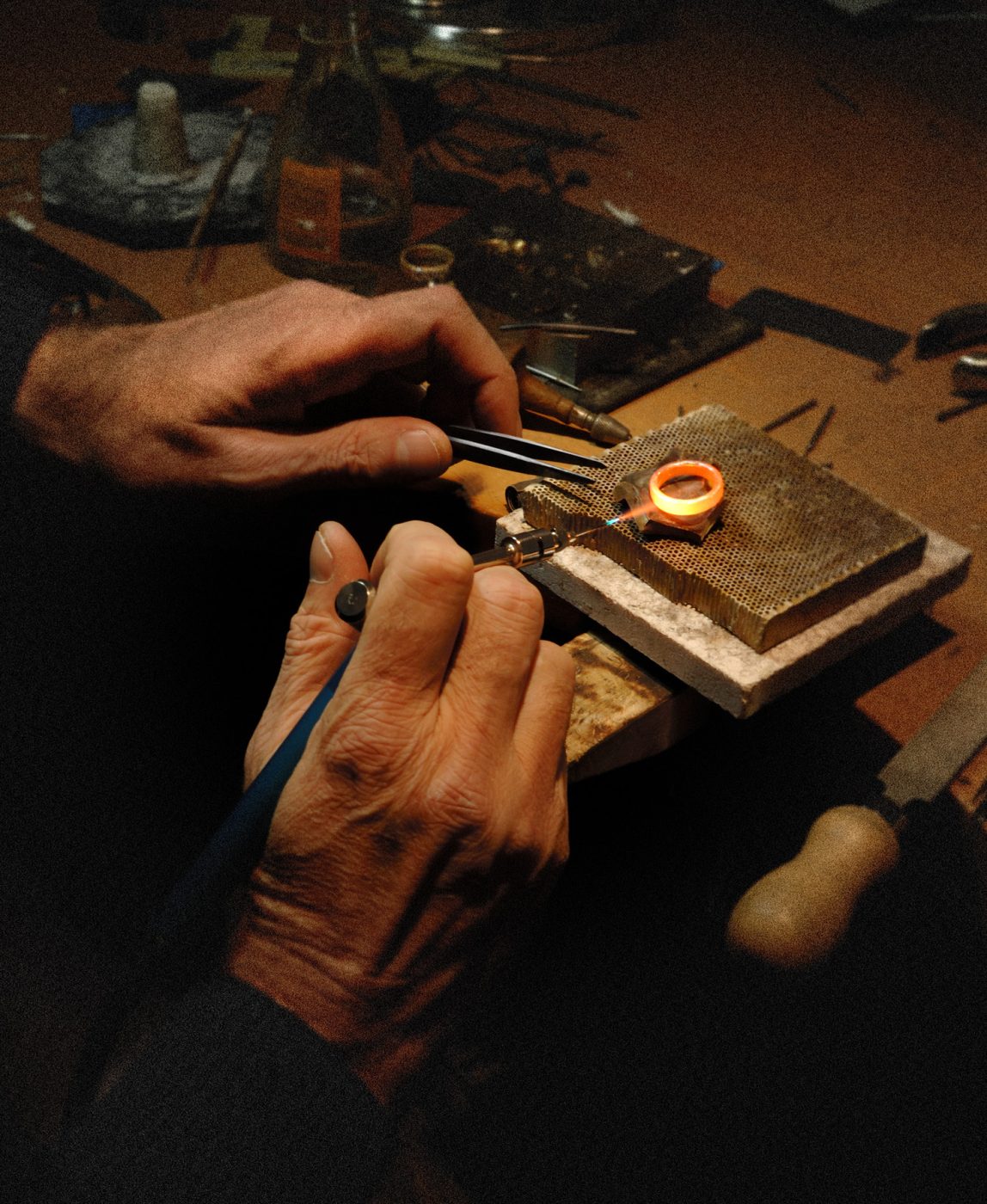

In fact, one bespoke design appears to have enabled a particular rock star to craft his own version of sublime stage presence. “Bono was given a crucifix by Pope John Paul II. We recast the base-metal cross in platinum and set it with a heart-shaped ruby, which was supported by a string of black-diamond beads to make a rosary, which he wore regularly on tour,” Betts says. “The only trouble is, he lost it twice. So, I made it three times, each one a little differently!”


Today, the jewelry house is welcoming a new, younger generation of clients, who have fallen for the designer’s combination of informal aesthetic with the warmth and brilliance of hand-beaten surfaces. Betts, whose calm demeanor belies his passion for goldsmithing and gem setting, is visibly enchanted by this fresh embrace of slow, handmade crafts. “One of my favorite pieces was something I made at the Royal College of Art many years ago,” he says. “We were given an ounce of fine gold and a week to work on it. I forged and shaped a huge silver ring with the gold folded and hammered in over the top. We were supposed to recycle the metals, but as my piece was well received, I was allowed to keep it. I actually still have it in a drawer downstairs! It’s special for lots of reasons, one being that it marked the start of a technique that I still love and use to this day.”


